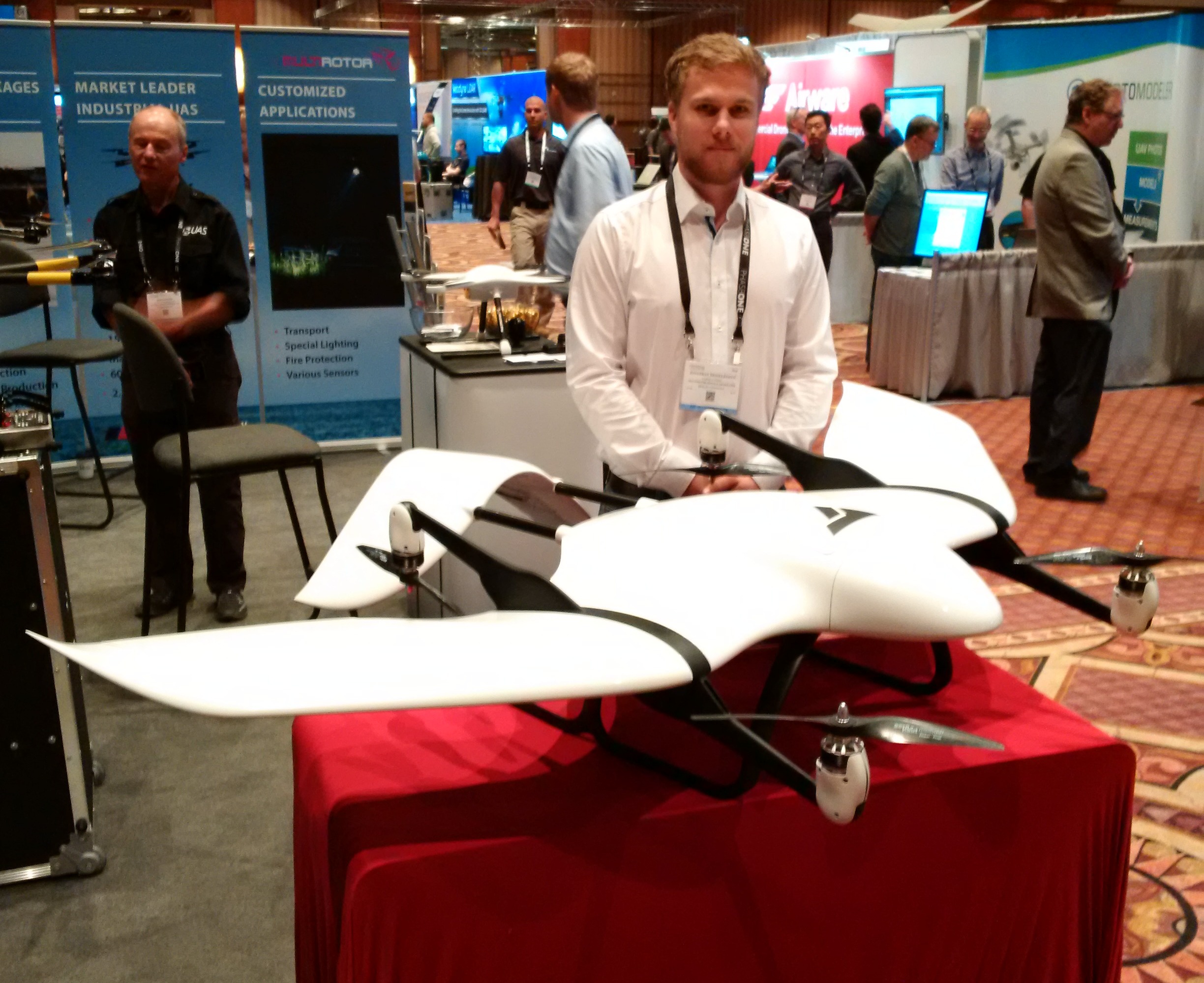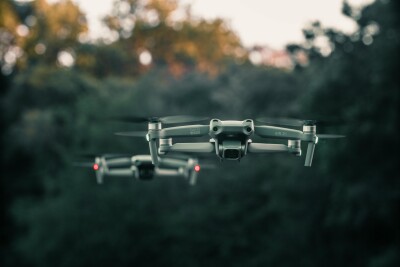One of the last frontiers to be successfully conquered by the aviation industry is the smooth transition from vertical (helicopters) to horizontal (fixed wing) flying, officially known as Vertical Take Off and Landing (VTOL). Boeing began toying with the concept in 1981 and in 1989 the first flight of the V22 Osprey took place. It was almost 20 years later that the production model was delivered to the US Marine Corps. The V22 has been plagued with problems and it has a high maintenance reputation.
Now a new generation of young entrepreneurs is emerging all over the world trying to overcome the inherent problems of this transition with innovative designs and UAV technology.Today, we sat down with Jonathan Hesselbarth, founder of Wingcopter (www.wingcopter.com) at the Commercial Expo UAV at the MGM Convention Center in Las Vegas and discussed the details of his VTOL design with him.The Wingcopter is a 5 to 9 Kg, four-rotor aircraft that makes the transition from vertical takeoff to horizontal flight smoothly and then lands vertically again, avoiding long runways and speed mishaps.With a top speed of 130 Km/h, a range of 100 km, a payload of 2 Kg and a flight time of two hours is an ideal platform for large jobs.Jonathan and his design team cleverly mixed the concept of four engines and a fix wing, utilizing a complex set of servos to coordinate the transition from vertical to horizontal and back to vertical. Wingcopter cleverly lowered the front rotors to avoid the tremendous backwash over the wing during the transition, therefore resolving the issue that has overwhelmed the V22 Osprey design.Wingcopter is currently flying a pilot project with a customer and will be ready for production in the near future.




.png.small.400x400.png)










Comments